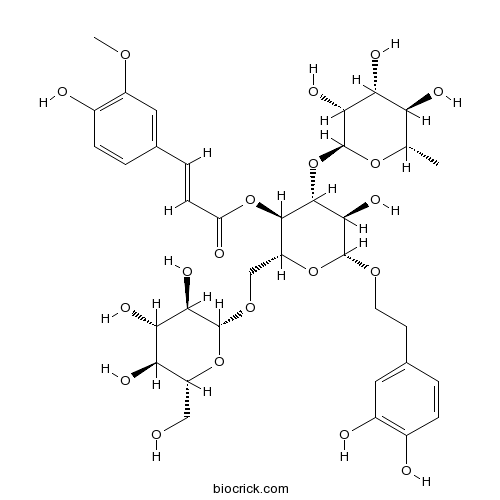Rehmannia chingii
Rehmannia chingii
1. The products in our compound library are selected from thousands of unique natural products; 2. It has the characteristics of diverse structure, diverse sources and wide coverage of activities; 3. Provide information on the activity of products from major journals, patents and research reports around the world, providing theoretical direction and research basis for further research and screening; 4. Free combination according to the type, source, target and disease of natural product; 5. The compound powder is placed in a covered tube and then discharged into a 10 x 10 cryostat; 6. Transport in ice pack or dry ice pack. Please store it at -20 °C as soon as possible after receiving the product, and use it as soon as possible after opening.
Natural products/compounds from Rehmannia chingii
- Cat.No. Product Name CAS Number COA
-
BCN2858
Jionoside B1120406-37-3
Instructions

-
BCN2922
Jionoside A1120444-60-2
Instructions

-
BCN4136
Acteoside61276-17-3
Instructions

Nine new compounds from the whole plants of Rehmannia chingii.[Pubmed: 27140322]
Nine new compounds, together with 16 known analogs, were isolated from the whole plants of Rehmannia chingii. The structures of compounds 1-9 were elucidated on the basis of their spectroscopic data and chemical evidence. In addition, the new compounds were tested for their hepatoprotective activities against APAP-induced HepG2 cell damage and their ability to inhibit LPS-induced nitric oxide production in the murine microglia BV2 cell line. Compounds 2 and 5 exhibited pronounced hepatoprotective activities against APAP-induced HepG2 cell damage at a concentration of 10 μM, and compounds 4 and 9 showed moderate inhibitory activity against microglial inflammation factor with IC50 values of 3.51 and 7.11 μM, respectively.
Bioactive Iridoid Glycosides from the Whole Plants of Rehmannia chingii.[Pubmed: 26859776]
Nine new iridoid glycosides, rehmachingiiosides A-I (1-9), together with 16 known analogues, were isolated from the whole plants of Rehmannia chingii. The structures of compounds 1-9 were elucidated on the basis of spectroscopic data analysis and from chemical evidence. Furthermore, in two vitro assays, compounds 5 and 10 showed an inhibitory effect on LPS-induced NO production with IC50 values of 2.5 and 7.3 μM, and compounds 4, 6, and 10-12 (when evaluated at 10 μM) exhibited evidence of hepatoprotective effects against APAP-induced HepG2 cell damage.


